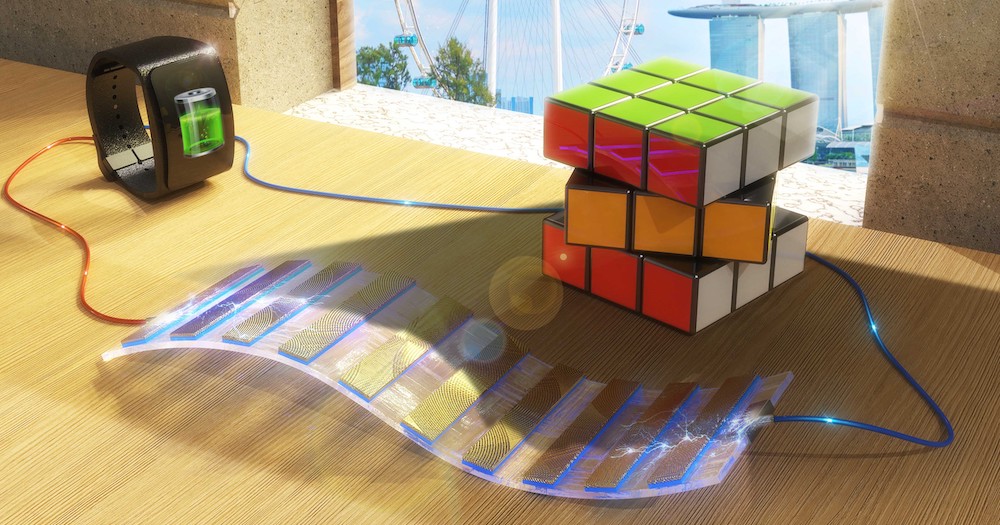When we think of green electricity, we might think of harnessing energy from the sun.
Researchers at the National University of Singapore (NUS) have a refreshing idea on how to obtain energy: from shadows.
Their research breakthrough was published in the scientific journal, Energy & Environmental Science, in April this year.
New way of generating power indoors
A group of six researchers at the NUS Department of Materials Science and Engineering and the Department of Physics have created a device, the shadow-effect energy generator (SEG).
The team took four months to conceptualise, develop, and perfect the performance of the SEG.
Using the difference in levels of light between a spot that is lit and a spot in the shadows, the device can generate an electric current.
 Image by Royal Society of Chemistry.
Image by Royal Society of Chemistry.
How does the Shadow-effect Energy Generator (SEG) work?
The SEG comprises a set of SEG cells arranged on a flexible and transparent plastic film.
Each SEG cell is a thin film of gold deposited on a silicon wafer.
Carefully designed, the SEG can be fabricated at a lower cost compared to commercial silicon solar cells.
The team then conducted experiments to test the performance of the SEG in generating electricity and as a self-powered sensor.
Twice as efficient as compared to a commercial solar cell
This device can then power electronic items, such as smart phones and digital watches, even in an indoor setting.
According to the team's experiments, their four-cell SEG device is two times more efficient than commercial silicon solar cells, when tested under the effect of shifting shadows.
Under indoor lighting conditions, the energy generated by their device from shadows powers a digital watch at 1.2V.
Next step: Lowering the cost
Currently, the device created by the researchers includes materials, such as gold.
Thus, the team will be experimenting will other materials of lower cost, in hopes of lowering the cost of their SEG device.
Besides reducing the cost of their device, they are hoping to develop wearable SEGs, which can be attached to clothes to generate electricity.
Top image via Unsplash
If you like what you read, follow us on Facebook, Instagram, Twitter and Telegram to get the latest updates.
